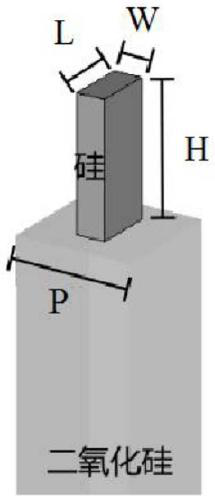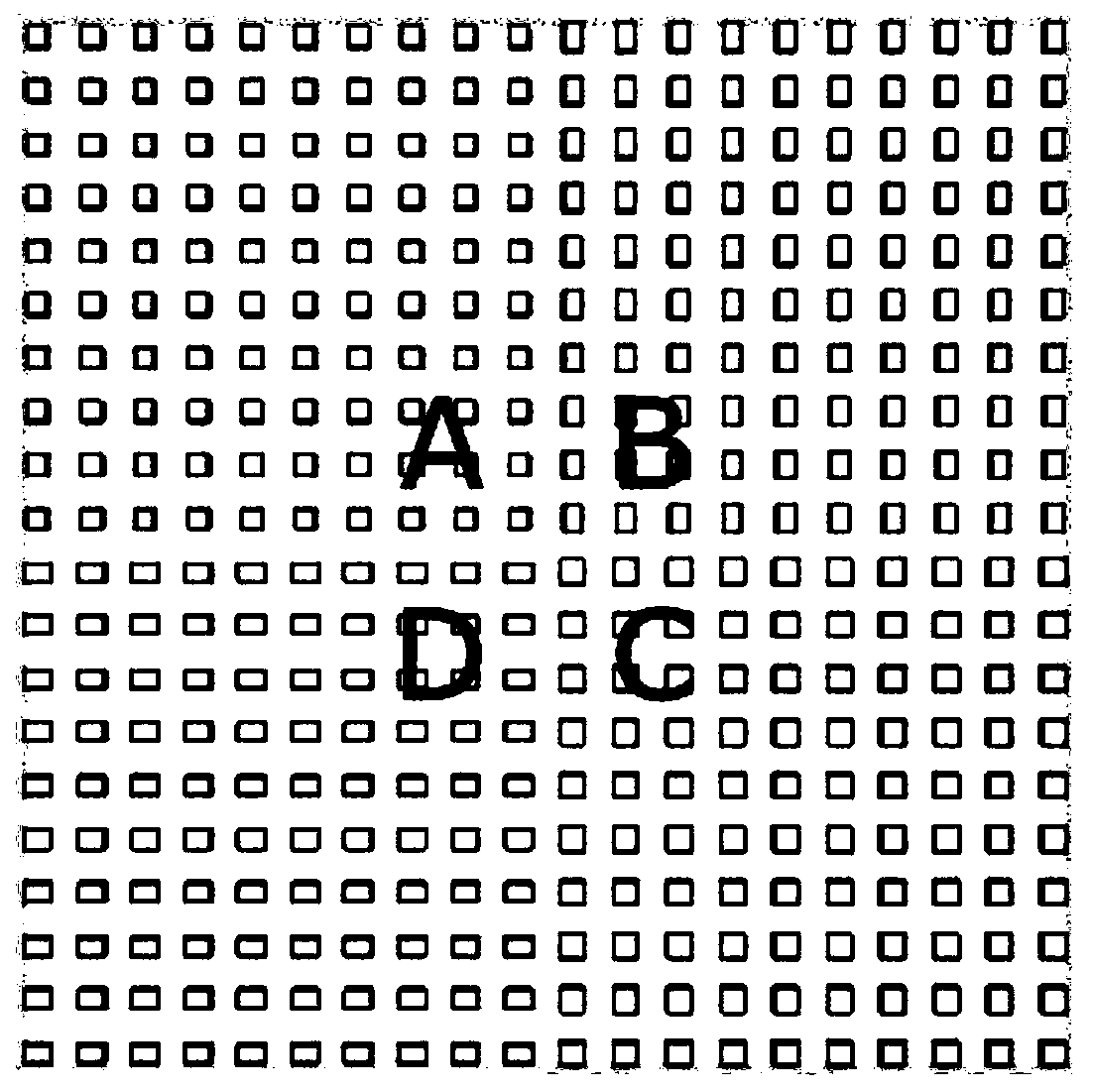A kind of optical fiber coupler based on linear polarization and its manufacture and use method
A fiber coupler, linear polarization technology, applied in the coupling of optical waveguides, instruments, optics, etc., can solve the problems of increasing the complexity of the optical system, and achieve the effect of reducing complexity, small size structure, and small insertion loss
- Summary
- Abstract
- Description
- Claims
- Application Information
AI Technical Summary
Problems solved by technology
Method used
Image
Examples
Embodiment 1
[0035] see figure 1 As shown, the embodiment of the present invention provides a fiber coupler based on linear polarization, which is used to convert incident light into other fiber modes. The fiber coupler is made of metasurface materials, including a substrate 1 and a silicon nanorod array. The silicon nanorod array is formed by a plurality of silicon nanorod units 2 etched on the substrate 1. The structural parameters of the silicon nanorods 3 in the same silicon nanorod unit 2 are the same, and the silicon nanorod units 2 in different silicon nanorod units 2 are arranged. The structural parameters of the nanorods 3 are different, that is, the silicon nanorod units 2 are divided according to the structural parameters of the silicon nanorods 3 .
[0036] The silicon nanorods 3 of different silicon nanorod units 2 are cuboids with different structural parameters. When the incident light is vertically incident, the light with the polarization direction along the long and shor...
Embodiment 2
[0053] see Figure 1-2 As shown, the embodiment of the present invention provides a method for manufacturing a fiber coupler based on linear polarization, which is characterized in that it includes the following steps:
[0054] S1: Determine the working wavelength as 1550nm, in order to convert the incident horizontal linearly polarized light into LP 11a mode, the incident vertically linearly polarized light is converted to LP 11b mode, it was determined that four different silicon nanorod units were required, see image 3As shown, the silicon nanorod array is divided into four silicon nanorod units, which are marked as A, B, C and D units in the figure. For vertical linearly polarized incident light, the A, B, C and D regions produce The phase delays of are 0, π, π, 0 respectively; for the horizontal linearly polarized incident light, the phase delays generated by the A, B, C and D regions are 0, 0, π, π respectively.
[0055] The phase delay of silicon nanorods in each si...
Embodiment 3
[0060] see Figure 5 with Image 6 As shown, the embodiment of the present invention also provides a method for using the above optical fiber coupler, including the following steps:
[0061] S1: Combine the modulated horizontal linearly polarized light and vertical linearly polarized light through the beam combiner 4, and the combined light is vertically incident on the silicon nanorod array of the first optical fiber coupler 5 to form LPs respectively 11a Mode and LP 11b mode of the higher-order mode, resulting in an LP 11a and LP 11b The normalized electric field intensity distribution of the mode is as Figure 4 shown;
[0062] S2: Different high-order modes are coupled into a few-mode fiber or a multi-mode fiber through a 4f system composed of a collimating lens 6 and a focusing lens 7 to realize fiber mode multiplexing;
[0063] S3: Two high-order modes propagating for a certain distance in the few-mode fiber or multi-mode fiber are incident on the silicon nanorod a...
PUM
 Login to View More
Login to View More Abstract
Description
Claims
Application Information
 Login to View More
Login to View More - Generate Ideas
- Intellectual Property
- Life Sciences
- Materials
- Tech Scout
- Unparalleled Data Quality
- Higher Quality Content
- 60% Fewer Hallucinations
Browse by: Latest US Patents, China's latest patents, Technical Efficacy Thesaurus, Application Domain, Technology Topic, Popular Technical Reports.
© 2025 PatSnap. All rights reserved.Legal|Privacy policy|Modern Slavery Act Transparency Statement|Sitemap|About US| Contact US: help@patsnap.com



